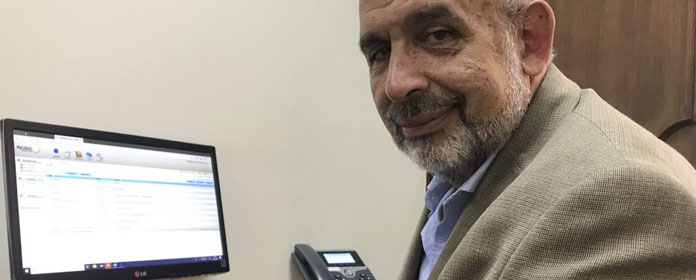20_11_26_ECO_Ecuador
Fairness to the poorest, one of the advantages of dollarisation in Ecuador
Ecuadorian economist Pablo Lucio Paredes discusses the dollarization process to Economics Society Club students

Dollarization is a phenomenon present in several Latin American countries such as Panama, Ecuador and El Salvador, among others. A phenomenon that, unlike the Euro, was not the result of a agreement between a series of states with a common central bank. Throughout history, there have been many countries that were dollarized for a time, such as Liberia or the Dominican Republic. Others continue with the dollar as their official currency, as is the case of Ecuador.
In this context, the Economics Society of the School Economics organized together with other students of the Universidad San Francisco de Quito (USFQ) a seminar the director of the Institute of Economics of the USFQ, Pablo Lucio Paredes, economist and constituent assemblyman, main promoter of the social contract for the Education and author of several books on Economics Ecuadorian.
Throughout his seminar, Paredes explained how dollarization is a particularly convenient way for undisciplined countries in subject monetary as would be Ecuador, something that manifests itself in inflation. Politicians use money creation as a solution to crises, instead of going into debt, for example. On the other hand, the devaluation of the currency (the sucre) was another important factor in the Ecuadorian Economics . The dollarization, which took place in 2000, occurred at a time when the country was facing several fronts, as Paredes explained: the 'El Niño' phenomenon, the fall in the price of oil, an international crisis status and a very weak political structure, etc. Monthly monetary issuance reached 25%, so Ecuadorians increased their dollar deposits (up to 50%) and the exchange rate subject multiplied by five. As a consequence, the country faced a fiscal problem, a lack of confidence in the national currency (and devaluation) and a sharp fall in the Economics.
The dollarization process in Ecuador, according to Paredes, was done by delivering sucres to the central bank, which exchanged them for dollars from reservation (25,000 sucres per dollar). Price stability was achieved a few years later after an inflation rate of 150%.
Among the advantages of dollarization he highlighted the equity, in order to protect the poorest people, the approach of the Economics towards productivity, the non-manipulation of the currency in favor of some and a greater discipline macroeconomic. However, among the problems he exposed the loss of the monetary instrument and a greater international dependence on the competitiveness of prices in Ecuador.

